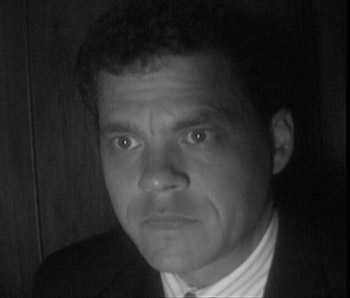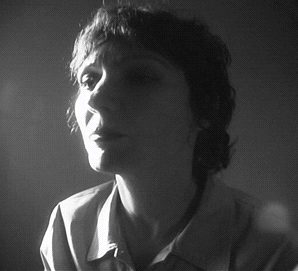Beyond Miramax
by Jesse Walker, Associate Editor, REASON Magazine

September
2001
Beyond
Miramax
by
Jesse Walker, Associate Editor,
REASON Magazine

Many articles have been written about one sort of indie-film success story: the "young," "scrappy" "maverick" whose Internet short or ultra-low-budget tape gets viewed by the right Hollywood exec, allowing the fresh-faced filmmaker to vault over those barriers and land a job assembling dream-widgets. This is not such a piece. This is about the moviemakers who don’t want Hollywood jobs, or at least don’t want them on Hollywood terms -- about people trying to find ways around the distribution bottleneck, and the audiences that are tentatively coalescing around them.
Antero Alli has been making movies for since 1993, but you shouldn’t expect to see many of them online soon: He’s happy to use the Web to draw attention to his work, but he has no interest in actual Webcasting. "I’ve come to the conclusion," he says, "that I’m an exhibition filmmaker. I make movies specifically for projection onto a big screen. That includes everything from the lighting to the composition of the frame. The depth, the sound, the narrative -- all of it, as an expression of my so-called art, for me demands a large screen and a very big speaker system."
Alli has another reason for preferring public exhibitions, one that invokes the people facing the screen rather than the screen itself. "I’m a great believer," he explains, "in this 20th-century ritual of a dark, cavernous room full of strangers, all looking through the same window. I think it’s an important social ritual worth preserving, and I see it in some ways being threatened, or its value diminished, by more convenient Internet streaming and video-on-demand." In that sense, his stance is a philosophic one, even if it means limiting his audience to those who can make it to screenings in Berkeley (where the Finnish-born filmmaker now lives) and selected other cities. (Alli takes his movies on tour, though he pretty much sticks to the West Coast. For eight years, he’s also run the Nomad Videofilm Festival, an annual traveling show featuring an assortment of short films and videos from around the world.)
Alli’s framework comes from theater. He has acted in and directed plays since the ’70s, often combining live theater with projected moving images. If you’re used to working in a live art form that can’t be mass-produced, it’s no small leap to treat your video work the same way. His latest feature is Tragos (2001), an inventive two hours of myth, science fiction, and film noir. In it, a cult of "technopagans" spends its nights communing with Tragos, a virtual-reality device that tests one’s ability to distinguish the virtual from the real, forcing its users to fight for their consciousness while they’re plugged in -- and enhancing their awareness of the real, and their disdain for the virtual, during their waking hours. After one session, the cult leader loses her sight and her sister dies; further deaths soon follow. A witch hunt ensues, led by a fiercely Christian prosecutor who regards Tragos and the technopagans as Satanic threats to public morals.


Bobby Weinapple and
Barbara Jaspersen
In rough outline, the story might sound like an opportunity for countercultural self-congratulation, with heroic pagans fighting off an oppressive church. Yet the prosecutor, though misguided, is one of the most sympathetic characters in the movie, and the priest who regularly gives him advice offers nothing but wisdom. In a film about scapegoating, Alli seems intent on making his audience consider its willingness to scapegoat as well. The cult leader, meanwhile, is clearly on the brink of madness. The film may sympathize with her, but her personality has more than a few shades of gray. Alli clearly has ideas to present, but they often take the form of questions, not answers.
And there is another character, an unemployed actor who hopes to play a detective in a Woody Allen movie and who prepares for his audition by living the part. Unaware that the actor isn’t a real investigator, the prosecutor hires him to infiltrate the Tragos cult. Besides offering comic relief -- the dialogue between the prosecutor and the faux detective is often very funny -- this portion of the plot adds another dimension to the story, giving us a viewpoint character who isn’t really affiliated with either the Christians or the pagans, though he must pretend to side with both.
Tragos was made for about $7,250, and though it features some visually interesting special effects, they were actually among the picture’s least costly expenses. Obviously, it represents a revolution in filmmaking, a series of technological changes that have made it much cheaper to make a complex, feature-length movie. Less obviously, it represents a challenge to conventional ideas about how and why to reach an audience.
"The only use I have for money, quite frankly, is to pay my survival bills and to fund my movies," says Alli. "I’m pretty low-maintenance. As for fame and recognition, I don’t really have that much use for it, with the exception of wanting my name known as an exhibition filmmaker so people can come see the movies in the only places where they’re shown." If the boundaries between the home movie and the independent film are breaking down, then this is another consequence of that: Not just home movies transformed, via the Net, into pop phenomena, but an increasing number of serious film artists with little or no interest in reaching a mass market.
Excerpted from a larger article in REASON Magazine
MORE TRAGOS